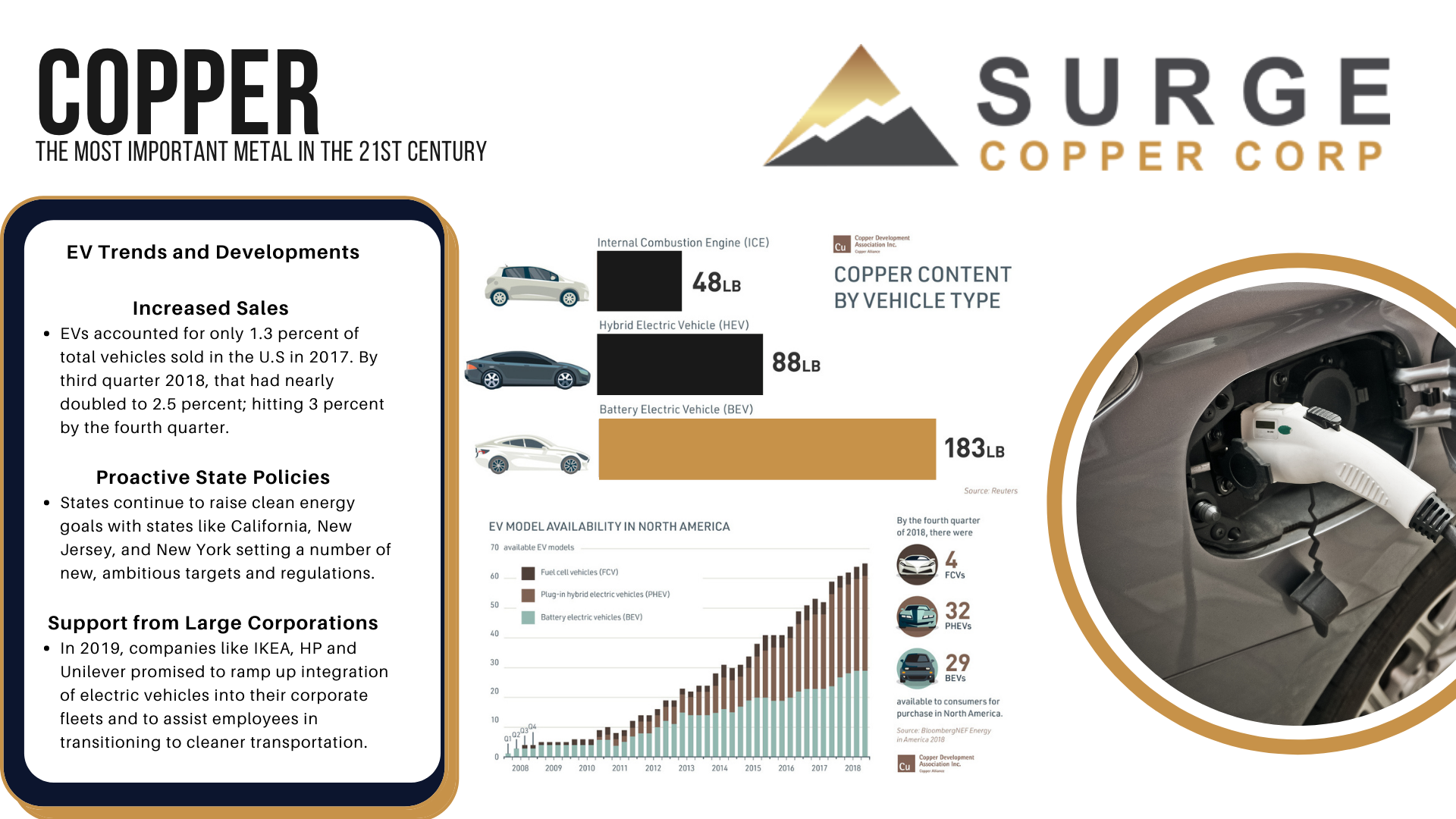The red metal has four key properties that make it ideal for the clean energy transition.
- Conductivity
- Ductility
- Efficiency
- Recyclability
It is these properties that make copper the critical material for wind and solar technology, energy storage, and electric vehicles. It’s also why, according to ThinkCopper, the generation of electricity from solar and wind uses four to six times more copper than fossil fuel sources.
Copper in Electric Vehicles
Copper is at the heart of the electric vehicle (EV). This is because EVs rely on copper for the motor coil that drives the engine. The more electric the car, the more copper it needs; a car powered by an internal combustion engine contains roughly 48 lbs, a hybrid needs 88 lbs, and a battery electric vehicle uses 184 lbs. Additionally, the cabling for charging stations of electric vehicles will be another source of copper demand.
Copper in Wind
A three-megawatt wind turbine can contain up to 4.7 tons of copper with 53% of that demand coming from the cable and wiring, 24% from the turbine/power generation components, 4% from transformers, and 19% from turbine transformers. The use of copper significantly increases when going offshore. That’s because onshore wind farms use approximately 7,766 lbs of copper per MW, while an offshore wind installation uses 21,068 lbs of copper per MW. It is the cabling of the offshore wind farms to connect them to each other and to deliver the power that accounts for the bulk of the copper usage.
Copper in Solar
Solar power systems can contain approximately 5.5 tons of copper per MW. Copper is in the heat exchangers of solar thermal units as well as in the wiring and cabling that transmits the electricity in photovoltaic solar cells. Navigant Research projects that 262 GW of new solar installations between 2018 and 2027 in North America will require 1.9 billion lbs of copper.
Copper in Energy Storage
There are many ways to store energy, but every method uses copper. For example, a lithium-ion battery contains 440 lbs of copper per MW and a flow battery 540 lbs of copper per MW. Copper wiring and cabling connects renewable power generation with energy storage, while the copper in the switches of transformers helps to deliver power at the right voltage. Across the United States, a total of 5,752 MW of energy capacity has been announced and commissioned.
The Copper Future
Advances in technologies create new material demands. Therefore, it shouldn’t be surprising that the transition to renewables is going to create demand for many minerals – and copper is going to be a critical mineral for the new era of energy.
Sources: VisualCapitalist & Copper Development Association Inc.

